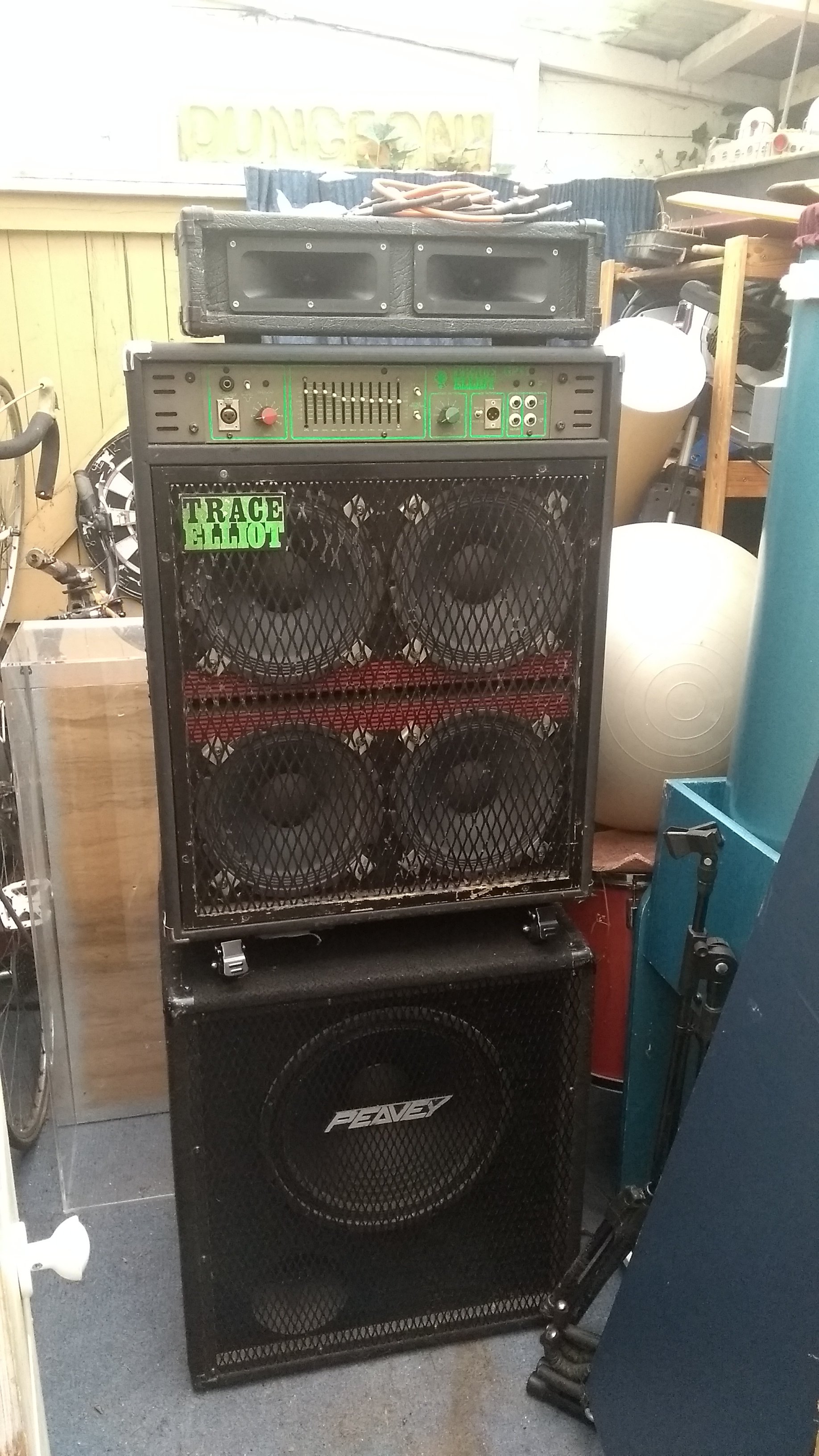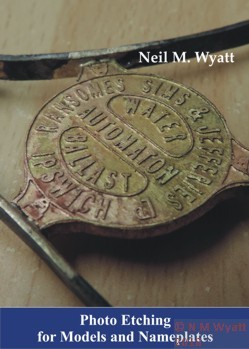The legend of 'Trace Elliot Watts' is that they are louder than anyone else's. Any electronic engineer will happily tell you that's utter rubbish,- a watt is a watt. On the other hand Hi-Fi buffs and musicians will start coming out with endless tales of amps that are 'louder' than they are supposed to be, as happened in a recent discussion on the marvellous Basschat Forum.
Its a fact that you have to walk a long way to find any musician who has played through a Trace Elliot amplifier and didn't think it was loud enough.
So here's my perspective and an explanation of why not all watts are created equal.
The short answer is marketing.
Back in the eighties, keen to flog more product, Amstrad came up with the ideal of 'music power' which rated their stereos according to their capacity to handle transients, like cymbal crashes and rimshots. This made them appear at least twice as powerful as amps rated by their 'RMS' capacity. Oh how we laughed at tiny silver plastic music centres claiming to put out 100Watt (peak music power). Of course it was Alan Sugar who laughed longest - all the way to the bank...
From then on, it a simple 'wattage rating' has never been enough to accurately judge how loud an amp is in a real setting, because manufacturers use all sorts of formulas an ways of assessing power... 'Peak Power', 'Total System Power' and 'Peak Music Power Output'...
(Lets just mention, Trace Elliot amps are not rated for 'music power').
The longer answer is a mixture of practicality, psychology and marketing.
There was some truth in Amstrad's approach - music (at least in the old days before the 'Loudness Wars') has its peaks and troughs. The volume of an amp isn't just its ability to deal with brief transients, it relates to the bits in between as well. Today virtually every consumer amplifier, from tiny desktop speakers up, quotes some sort of 'calculated, theoretical, maximum transient power rating'.
If you really want to know, objectively, how powerful an amplifier is, you typically feed it a 'sine wave' signal, increase it until it is not quite distorting from being too loud. This power is usually stated as the 'continuous route mean square output power' or 'continuous RMS power'.
Imagine a valve amp and a transistor amp, both being fed a pure sine wave such that they are almost starting to clip. Lets assume this is at the same power level for both amps, so on paper they both have the same continuous RMS power. This signal will give you the longest constant outpout - all day long, not just for a crescendo.
Even with this, amplifier manufacturers can play their marketing games. Distortion is measured as 'Total Harmonic Distortion', given as a percentage. Some people rate at 0.01% THD, some at 0.1%, usually at 1% THD which is pretty much inaudible. Some even rate at 10% THD, at which point you will have no trouble hearing that the sound is 'changed' by the amp being pushed hard.
Let's consider a pair of Bass Amplifiers, one transitor, one valve
Play bass through both amps and turn up. Push the valve amp into clipping on the loudest bits and it will sound rich, push the transistor amp into clipping and it will sound harsh. They might have the same THD, but the valve amp will be 'easier' to listen to (that's why 97.8% of guitarists love an overdriven valve amp tone).
This also means that you can't have the transistor amp turned up as loud for the quieter bits as the valve amp, as the transistor amp sounds overloaded when you dig in.
So the amps have identical wattage ratings, but the valve amp can be played in a way that is louder. Effectively it is compressing the signal upwards at the cost of distortion, but a type of distortion people generally like.
More Power!
Also, some amps have power supplies with undersized transformers or smoothing capacitors, so when played hard the voltage 'droops' and overall power drops. Quite simply, a quality amplifier can pump up the volume for longer.
And there's more!
Other things affect volume; it's easy for a well designed speaker cab to double the volume for example.
There's a famous test on line where a Fender HRD (40W), Vox AC30 (30W) and Marshall stack (100W) are compared and they come out in that order - yes folks, the AC30 is louder than the Marshall stack. The numbers were 124.6 dB, 124.1 dB and 119.5 dB. Close, but enough to hear the difference between the stack and the two combos.
www.harmonycentral.com/marshall-100-watt-stack-vox-ac30-fender-volume/
It's not just speaker design. I have a Vox Valvetronix which is marketed as a 20W amp, but it has a 'power control' (it's a modelling amp) and you can actually turn it up to 30 watts... so not all headline wattage ratings are exaggerated!
But does Power make much difference anyway?
The biggest pitfall is that, at usual volumes (i.e. not dead quiet or super loud) a doubling of perceived volume requires a ten-times increase in power. I've played a 1-watt battery powered amp through a JCM800 1x12" cab and it was way to loud to play in the living room. Anyone with a Blackstar Fly (3W) can test this!
Most bass amps fall between 150W and 500W, with outliers at 100W and 1000W and above. The difference between 150W and 500W RMS is pretty small and in practice the extra volume is largely down to the same thing as that valve/transistor comparison - the more powerful amps have more headroom, i.e. you can play them significantly louder without distortion.
Sorry guys, your 1000W mega-amp is, fundamentally, only four time louder than spotty kid's 10W practice amp... through the same speakers.
Back to Trace Elliot Watts
As for Trace Elliot watts, I think the legend (or myth if your are a sceptic) is down to five things:
- Honest power ratings - your can stick a sine wave into one and get the rated power out of it continuously. I know, I've done it, and actually got rather more than the rated output.
- Good power supplies that can sustain the rated outputs and don't 'droop' excessively.
- Mosef amplifiers that, perhaps, clip less harshly and sound closer to valve amps.
- Well designed cabinets with quality drivers.
None of those three is exclusive to Trace Elliot, but taken together they mean a Trace amp is always going to be near the top of the pile when comparing amps of a given power rating.
Unicorn Amplifiers...
In the early days of Trace Elliot's dominance of the bass amplifier market demand for products sometimes exceeded supply of parts; it's been reported on many occasions that they just swapped in parts from other amps. I have the evidence - a '150W' combo fitted with a 200W/300W into 4 ohm power supply, but with a 150W amp board. Aware this was pushing their luck, the amp has a cooling fan fitted and the sockets for an extension cab left out, yet it still dumps over 200 watts (and more) into 8 ohms. Even so it has had to have the power transistors replaced in the past - presumably because putting 200 Watts through a 150 Watt amplifier is not a good idea in the long run.
- This penchant for making amps with the wrong power supply when components run short, means there are 'under-rated' amps out there that really do sound louder than their ratings.
So, my guess is that these 'black swan' or 'unicorn' amps that were noticeably over-powered for their rating are the true source of the legendary 'Trace Elliot Watts'. You start with amps that are loud, and then add a few rogues that are genuinely louder than their rating.
Finally...
Good news for me, carrying out a service on my Trace Elliot 1110 combo, it came to light that it had this higher power supply. I was able to fit not just the sockets for an extension cab, but an extra pair of output transistors capable of taking the full output into 4 ohms. My 150W amp is now a 300W amp ... and that's 300 Trace Elliot Watts. Bow down, mortals...



